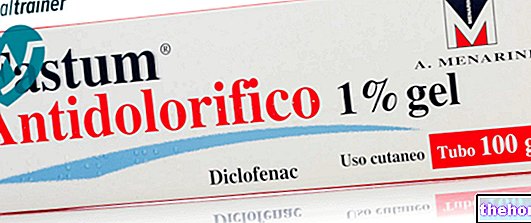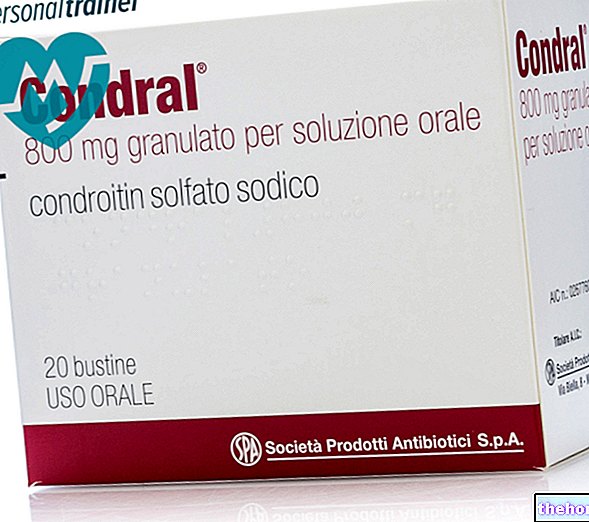Active ingredients: Clindamycin
DALACIN T 1% cutaneous solution
DALACIN T 1% skin emulsion
DALACIN T 1% gel
Why is Dalacin T used? What is it for?
PHARMACOTHERAPEUTIC CATEGORY
Antimicrobial for the treatment of acne.
THERAPEUTIC INDICATIONS
Treatment of acne vulgaris.
Contraindications When Dalacin T should not be used
Clindamycin is contraindicated in people who have previously had hypersensitivity to clindamycin, lincomycin or any of the other ingredients of this medicine.
Clindamycin is contraindicated in subjects who have previously experienced colitis linked to the use of antibiotics.
Precautions for use What you need to know before you take Dalacin T
DALACIN T cutaneous solution contains an alcoholic base which can cause, in case of contact, ocular burning and irritation of the mucous membranes and abraded skin.
In case of accidental contact with sensitive surfaces (eyes, abraded skin, mucous membranes) wash with plenty of fresh water.
Clindamycin has an unpleasant taste and therefore care should be taken when applying the drug around the mouth.
Interactions Which drugs or foods can modify the effect of Dalacin T
Tell your doctor or pharmacist if you have recently taken any other medicines, even those without a prescription. A synergistic action has been reported with metronidazole against Bacteroides fragilis. The association with gentamicin can occasionally determine a synergism and never an antagonism. A cross-reactivity between clindamycin and lincomycin has been demonstrated. Systemic clindamycin has neuromuscular blocking properties and can enhance the neuromuscular blocking effect of drugs specific for this action (for example: ether, tubocurarine, pancuronium); therefore it should be used with caution in patients using these medicines. Warfarin or similar medicines used to thin the blood. You may be more at risk of bleeding. Your doctor may need to have regular blood tests to check the ability of your blood to clot
Warnings It is important to know that:
Avoid contact with eyes.
Oral and parenteral administration of clindamycin, like most other antibiotics, has been associated with severe diarrhea and pseudomembranous colitis (see UNDESIRABLE EFFECTS). After topical application of clindamycin, the absorption of the antibiotic occurs through the skin surface; the product is absorbed in minimal quantities systemically. Diarrhea and colitis have rarely been reported following topical use of clindamycin. Therefore, the physician should be warned of the possible occurrence of diarrhea or colitis associated with the use of the antibiotic. medicinal product should be discontinued and appropriate diagnostic procedures and therapy used.
Diarrhea, colitis and pseudomembranous colitis may occur up to a few weeks after discontinuation of oral and parenteral therapy with clindamycin.
The use, especially if prolonged, of products for topical use, can give rise to sensitization phenomena. In this case, stop the treatment and consult the doctor to establish a suitable therapy. In very early childhood, the product should be administered only in cases of real need, under the direct supervision of the doctor.
Fertility, pregnancy and breastfeeding
Ask your doctor or pharmacist for advice before taking any medicine.
Pregnancy
Reproductive toxicity studies conducted in rats and rabbits following oral and subcutaneous administration have shown no signs of impaired fertility or fetal harm caused by clindamycin, except at doses that induce maternal toxicity. Reproduction studies in animals are not always predictive of response in humans.
In clinical studies in pregnant women, systemic administration of clindamycin in the second and third trimesters was not associated with an increase in the frequency of congenital anomalies.
In the first trimester of pregnancy, clindamycin should only be used if strictly necessary. There are no adequate and well-controlled studies in women in the first trimester of pregnancy.
Feeding time
It is not known whether clindamycin is excreted in human milk after topical application. However, clindamycin administered orally and parenterally was found in breast milk. Because of the potential undesirable effects in infants, discontinuation of breastfeeding or discontinuation of the medicinal product should be considered, depending on the importance of the medicinal product to the mother.
As a general rule, it is advisable to avoid concomitance between breastfeeding and therapy, since many drugs are excreted in breast milk.
Fertility
Fertility studies in rats treated with oral clindamycin showed no effects on fertility or reproductive capacity.
Effects on ability to drive and use machines
Clindamycin has no or negligible influence on the ability to drive and use machines.
Important information about some of the ingredients
The methyl para-hydroxybenzoate contained in the skin emulsion and in the gel can cause allergic reactions (even delayed).
The cetostearyl alcohol contained in the skin emulsion can cause local skin reactions (such as contact dermatitis).
The propylene glycol contained in the skin solution and gel can cause skin irritation.
Dosage and method of use How to use Dalacin T: Dosage
Apply a thin layer of product twice a day to the affected area.
It is not necessary to massage the skin. Rinse your hands after each application.
Overdose What to do if you have taken too much Dalacin T.
As there are no dose-related side effects, overdose is a rare problem, especially if the drug is administered as directed.
Topical clindamycin can be absorbed in sufficient quantities to produce systemic effects.
In case of accidental ingestion / intake of an excessive dose of DALACIN T, notify your doctor immediately or go to the nearest hospital.
If you have any questions about the use of DALACIN T, ask your doctor or pharmacist.
Side Effects What are the side effects of Dalacin T
The following table presents adverse reactions identified through clinical studies and post-marketing surveillance, sorted by system organ class and frequency. Adverse reactions identified from post-marketing experience are shown in italics. Frequency groups are defined using the following convention: very common (≥1 / 10); common (≥1 / 100,
The most frequent side effect with the DALACIN T solution formulation is dryness of the skin.
With the use of topical formulations there is a systemic absorption of the antibiotic through the skin.
Cases of diarrhea, haemorrhagic diarrhea and colitis (including severe pseudomembranous colitis) have been reported following administration of clindamycin, both topically and systemically.
The physician must therefore evaluate the possible development of antibiotic-dependent diarrhea and colitis. These types of colitis are usually characterized by severe and persistent diarrhea and intense abdominal cramps, possibly with blood and mucus in the stool.
In the case of severe diarrhea, a rectosigmoidoscopic examination is recommended.
In case of diarrhea, the application of the drug must be stopped immediately and appropriate therapy instituted by the doctor.
Antiperistaltic drugs, such as opiates and diphenoxylate with atropine, can prolong or worsen the condition.
Cases of modest colitis may regress upon simple discontinuation of therapy.
In moderate to severe cases, it is recommended to administer fluids, electrolytes and proteins, as needed.
Vancomycin has been shown to be effective in the treatment of antibiotic-induced pseudomembranous colitis caused by Clostridium difficile.
Usually in adults, the daily dose ranges from 500 mg to 2 g of vancomycin per OS, divided into 3-4 administrations, for 7-10 days.
Cholestyramine binds to the toxin in vitro, but this resin also binds to vancomycin. Therefore in the case of simultaneous administration of cholestyramine and vancomycin it is advisable to administer each drug at different times.
In cases of colitis, however, all other possible causes must be considered.
Particular attention should also be paid to allergic history related to the use of drugs or other allergens.
Compliance with the instructions contained in the package leaflet reduces the risk of undesirable effects.
Reporting of side effects
If you get any side effects, talk to your doctor or pharmacist. This includes any possible side effects not listed in this leaflet. Side effects can also be reported directly via the national reporting system at https://www.aifa.gov.it/content/segnalazioni-reazioni-avverse. By reporting side effects you can help provide more information on safety of this medicine.
Expiry and Retention
Expiry: see the expiry date printed on the package.
The expiry date refers to the product in intact packaging, correctly stored.
WARNING: do not use the medicine after the expiry date indicated on the package.
Medicines should not be disposed of via wastewater or household waste. Ask your pharmacist how to dispose of medicines you no longer use. This will help protect the environment. Gel and cutaneous solution: store the product at a temperature not exceeding 25 ° C.
Keep this medicine out of the sight and reach of children.
Composition and pharmaceutical form
COMPOSITION
DALACIN T 1% cutaneous solution
100 ml of solution contain: Active ingredient: clindamycin phosphate 1.188 g, equivalent to 1 g of clindamycin base. Excipients: propylene glycol, isopropyl alcohol, deionized water.
DALACIN T 1% skin emulsion
100 g of emulsion contain: Active ingredient: clindamycin phosphate 1.188 g, equivalent to 1 g of clindamycin base. Excipients: glycerin, isostearyl alcohol, cetostearyl alcohol, stearic acid, glyceryl monostearate, sodium lauryl sarcosinate, methyl para-hydroxybenzoate, purified water.
DALACIN T 1% gel
100 g of gel contain: Active ingredient: clindamycin phosphate 1.188 g, equivalent to 1 g of clindamycin base. Excipients: allantoin, methyl para-hydroxybenzoate, propylene glycol, polyethylene glycol 400, carbomer 934P, purified water.
PHARMACEUTICAL FORM AND CONTENT
1% Cutaneous solution - Bottle 30 ml
1% Skin emulsion - Bottle 30 ml
1% Gel - Tube 30 g
Source Package Leaflet: AIFA (Italian Medicines Agency). Content published in January 2016. The information present may not be up-to-date.
To have access to the most up-to-date version, it is advisable to access the AIFA (Italian Medicines Agency) website. Disclaimer and useful information.
01.0 NAME OF THE MEDICINAL PRODUCT
DALACIN T 1%
02.0 QUALITATIVE AND QUANTITATIVE COMPOSITION
DALACIN T 1% cutaneous solution
100 ml contain: clindamycin phosphate 1.188 g equivalent to clindamycin base 1 g.
DALACIN T 1% skin emulsion
100 g contain: clindamycin phosphate 1.188 g equivalent to clindamycin base 1 g.
DALACIN T 1% gel
100 g of gel contain: clindamycin phosphate 1.188 g equivalent to clindamycin base 1 g.
For the full list of excipients, see section 6.1.
03.0 PHARMACEUTICAL FORM
Skin solution, skin emulsion, gel.
04.0 CLINICAL INFORMATION
04.1 Therapeutic indications
Treatment of acne vulgaris.
04.2 Posology and method of administration
Apply a thin layer of product twice a day to the affected area.
It is not necessary to massage the skin. Rinse your hands after each application.
SKIN USE.
04.3 Contraindications
The drug is contraindicated in subjects who have previously shown hypersensitivity to the active substance or to any of the excipients, or to lincomycin or in patients with previous colitis episodes related to the use of antibiotics.
04.4 Special warnings and appropriate precautions for use
Avoid contact with eyes.
Oral and parenteral administration of clindamycin has been associated with severe diarrhea and pseudomembranous colitis. After topical application of clindamycin, absorption of the antibiotic occurs through the skin surface (see section 5.2 Pharmacokinetic properties); the product is absorbed in minimal quantities systemically. Diarrhea and colitis have rarely been reported following topical use of clindamycin. Therefore, the physician should be warned of the possibility of diarrhea or colitis associated with the use of the antibiotic. In case of consistent or prolonged diarrhea. the medicinal product should be discontinued and appropriate diagnostic procedures and therapy used.
Diarrhea, colitis and pseudomembranous colitis may occur up to a few weeks after discontinuation of oral and parenteral therapy with clindamycin.
The use, especially if prolonged, of products for topical use can give rise to sensitization phenomena. In this case, stop the treatment and consult the doctor to establish a suitable therapy.
DALACIN T cutaneous solution contains an alcoholic base which can cause, in case of contact, burning and eye irritation. In case of accidental contact with sensitive parts, such as eyes, mucous membranes, abraded skin, wash with plenty of fresh water.
The product has an unpleasant taste and therefore care should be taken when applying it around the mouth.
In very early childhood, the product should be administered only in cases of real need, under the direct supervision of the doctor.
Important information about some of the ingredients
The methyl para-hydroxybenzoate contained in the skin emulsion and in the gel can cause allergic reactions (even delayed).
04.5 Interactions with other medicinal products and other forms of interaction
In vitro antagonism has been demonstrated between clindamycin and erythromycin while a synergistic action with metronidazole against the Bacteroides fragilis.
The association with gentamicin can occasionally determine a synergism and never an antagonism.
Cross-reactivity between clindamycin and lincomycin has been demonstrated.
Clindamycin has neuromuscular blocking properties and may potentiate the neuromuscular blocking effect of drugs specific for this action (eg ether, tubocurarine, pancuronium); therefore it should be used with caution in patients using these drugs.
04.6 Pregnancy and lactation
Use in pregnancy
Reproductive toxicity studies from oral and subcutaneous clindamycin in rats and rabbits did not demonstrate a reduction in fertility or harm to the fetus. However, adequate and well-controlled studies in pregnant women have not been conducted. Since animal reproduction studies are not always predictive for humans, clindamycin should only be taken during pregnancy if clearly needed.
Use while breastfeeding
It is not known whether clindamycin is excreted in breast milk after topical application; however, it has been shown to be present after oral and parenteral administration. Due to potential adverse effects in infants, discontinuation of breastfeeding or "discontinuation of the medicine, depending on the importance of the medicine to the mother.
As a general rule, it is advisable to avoid concomitance between breastfeeding and therapy, since many drugs are excreted in breast milk.
04.7 Effects on ability to drive and use machines
No studies on the ability to drive and use machines have been performed.
04.8 Undesirable effects
The following undesirable effects have been reported following therapy with clindamycin (frequencies are reported as follows: Very common: ≥1 / 10; Common: ≥1 / 100 and
The most frequent side effect with the DALACIN T solution formulation is dryness of the skin.
With the use of topical formulations there is a systemic absorption of the antibiotic through the skin.
Cases of diarrhea, haemorrhagic diarrhea and colitis (including severe pseudomembranous colitis) have been reported following administration of clindamycin, both topically and systemically.
The physician should therefore evaluate the possible development of antibiotic-dependent diarrhea and colitis. These types of colitis are usually characterized by severe and persistent diarrhea and intense abdominal cramps, possibly with blood and mucus in the stool.
In the case of severe diarrhea, a rectosigmoidoscopic examination is recommended.
In case of diarrhea, the application of the drug must be stopped immediately and appropriate therapy instituted by the doctor.
Antiperistaltic drugs, such as opiates and diphenoxylate with atropine, can prolong or worsen the condition.
Cases of modest colitis may regress upon simple discontinuation of therapy.
In moderate to severe cases, it is recommended to administer fluids, electrolytes and proteins, as needed.
Vancomycin has been shown to be effective in treating antibiotic-induced pseudomembranous colitis caused by Clostridium difficile.
Usually in adults, the daily dose ranges from 500 mg to 2 g of vancomycin per OS, divided into 3-4 administrations, for 7-10 days.
Cholestyramine binds to the toxin in vitro: however this resin also binds to vancomycin. Therefore in the case of simultaneous administration of cholestyramine and vancomycin it is advisable to administer each drug at different times.
In cases of colitis, however, all other possible causes must be considered.
Particular attention should also be paid to allergic history related to the use of drugs or other allergens.
04.9 Overdose
As there are no dose-related side effects, overdose is a rare problem, especially if the drug is administered as directed.
Topical clindamycin can be absorbed in sufficient quantities to produce systemic effects.
In case of overdose, treat symptomatically and institute adequate supportive care as needed.
05.0 PHARMACOLOGICAL PROPERTIES
05.1 Pharmacodynamic properties
Pharmacotherapeutic group: antimicrobial for the treatment of acne.
ATC code: D10AF01
DALACIN T for topical use contains clindamycin phosphate, a water-soluble ester of the semi-synthetic antibiotic obtained by the 7 (S) -chlorine substitution of the 7 (R) -hydroxy group of lincomycin.
Clindamycin has been shown to have an "activity in vitro against isolated strains of the following microorganisms:
Aerobic gram-positive cocci, comprising Staphylococcus aureus, Staphylococcus epidermidis (including penicillinase producing strains). When tested in vitro some strains of staphylococci originally resistant to erythromycin rapidly develop resistance to clindamycin.
Streptococci (excluded S. faecalis), Pneumococci, Chlamydia trachomatis (sensitive strains).
Gram-negative anaerobic bacilli, comprising: Bacteroides s.p.p., Fusobacterium s.p.p., Gram-positive asporogenic anaerobic bacilli, including: Propionibacterium, Eubacterium, Actinomyces s.p.p. Gram positive anaerobic and microaerophilic cocci, including: Peptococcus s.p.p. Peptostreptococcus s.p.p; Microaerophilic streptococci
Although clindamycin phosphate is inactive in vitro, a rapid hydrolysis in vivo transforms it into active clindamycin.
Clindamycin possesses an activity, in vivo, against isolated strains of Propionibacterium acnes. This activity suggests its use in the treatment of acne.
Cross-resistance between clindamycin and lincomycin has been demonstrated and, in vitro, antagonism between clindamycin and erythromycin. The clinical significance of this interaction is unknown.
05.2 "Pharmacokinetic properties
After repeated application on the skin of a 1% hydroalcoholic solution of clindamycin phosphate, the serum levels of the drug are very low (0-3 ng / ml) and urinary concentrations are less than 0.2% of the applied dose.
The presence of active clindamycin has been demonstrated in the comedones of acne patients.
The mean concentration of antibiotic activity in comedone extracts, after application of topical DALACIN T for 4 weeks, was found to be 597 mcg / g of comedone material.
Clindamycin inhibited, in vitro, all crops of Propionibacterium acnes tested (MCI 0.4 mcg / ml).
The topical application of DALACIN T reduced the free fatty acids present on the skin surface from 14% to 2%.
05.3 Preclinical safety data
The acute toxicity data relating to the experimental animal are as follows:
Clindamycin phosphate, administered parenterally to rats at a dose of 120 mg / kg / day for 6 days or 30 mg / kg / day for 30 days, was well tolerated. Administered i.v. in dogs (up to 120 mg / kg / day for a period of 6-27 days) did not induce significant changes.
The administration i.m. in dogs (up to 90 mg / kg / day for 6-30 days) induced pain at the injection site and an increase in transaminases.
Local and general tolerability, evaluated in rabbits, was found to be good.
Clindamycin phosphate in mouse, rat and pig studies did not show any teratogenic effect.
The administration of 100-180 mg / kg of clindamycin phosphate to pregnant rats and mice did not induce changes in production parameters or teratogenic effects.
Carcinogenicity: Long-term animal studies have not been conducted to evaluate the carcinogenic potential of clindamycin.
Mutagenicity: Genotoxicity studies performed included the micronucleus test, with rat cells, and the Ames test for reversion of a Salmonella strain. Both tests gave negative results.
Impaired Fertility: No effects on fertility or mating were reported in rats following oral administration of doses up to 300 mg / kg / day of clindamycin (approximately 1.1 times the highest recommended human dose expressed in mg / m2).
06.0 PHARMACEUTICAL INFORMATION
06.1 Excipients
Skin solution: propylene glycol, isopropyl alcohol, deionized water.
Skin emulsion: glycerin, isostearyl alcohol, cetostearyl alcohol, stearic acid, glyceryl monostearate, sodium lauryl sarcosinate, methyl para-hydroxybenzoate, purified water.
Gel: allantoin, methyl para-hydroxybenzoate, propylene glycol, polyethylene glycol 400, carbomer 934P, purified water.
06.2 Incompatibility
Not relevant.
06.3 Period of validity
Skin solution: 2 years.
Skin emulsion: 2 years.
Gel: 2 years.
06.4 Special precautions for storage
Gel and cutaneous solution: store at a temperature not exceeding 25 ° C.
06.5 Nature of the immediate packaging and contents of the package
Skin solution: bottle in frosted neutral glass with applicator cap - Bottle of 30 ml of 1% cutaneous solution.
Skin emulsion: polythene bottle with polypropylene cap - 30 ml bottle of 1% skin emulsion.
Gel: laminated tube - 1 tube of 30 g of 1% gel.
06.6 Instructions for use and handling
Unused medicine and waste derived from this medicine must be disposed of in accordance with local regulations.
07.0 MARKETING AUTHORIZATION HOLDER
Pfizer Italia S.r.l.
Via Isonzo, 71 - 04100 Latina
08.0 MARKETING AUTHORIZATION NUMBER
Skin solution - bottle of 30 ml - AIC 025314016
Skin emulsion - 30 ml bottle - AIC 025314030
Gel - tube of 30 g - AIC 025314042
09.0 DATE OF FIRST AUTHORIZATION OR RENEWAL OF THE AUTHORIZATION
May 31, 2005
10.0 DATE OF REVISION OF THE TEXT
December 30, 2011




























